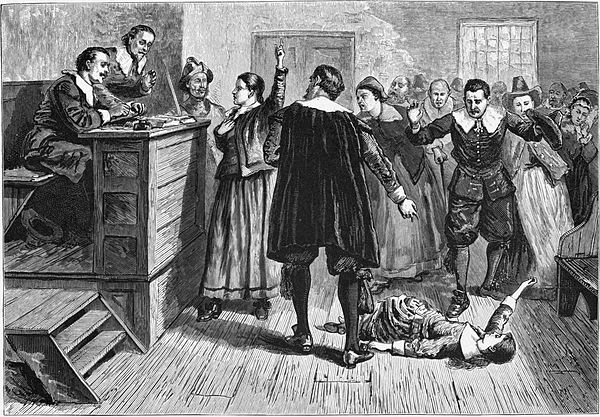Salem witch trials.

The central figure in this 1876 illustration of the courtroom is usually identified as Mary Walcott.The Salem witch trials were a series of hearings and prosecutions of people accused of witchcraft in colonial Massachusetts between February 1692 and May 1693. The trials resulted in the executions of twenty people, most of them women. Despite being generally known as the Salem witch trials, the preliminary hearings in 1692 were conducted in several towns in the Province of Massachusetts Bay: Salem Village (now Danvers), Ipswich, Andover, and Salem Tow
The most infamous trials were conducted by the Court of Oyer and Terminer in 1692 in Salem Town. One contemporary writer summarized the results of the trials:And now Nineteen persons having been hang'd, and one prest to death, and Eight more condemned, in all Twenty and Eight, of which above a third part were Members of some of the Churches of N. England, and more than half of them of a good Conversation in general, and not one clear'd; about Fifty having confest themselves to be Witches, of which not one Executed; above an Hundred and Fifty in Prison, and Two Hundred more accused; the Special Commision of Oyer and Terminer comes to a period.— Robert Calef At least five more of the accused died in prison.When I put an end to the Court there ware at least fifty persons in prision in great misery by reason of the extream cold and their poverty, most of them having only spectre evidence against them and their mittimusses Bering defective, I caused some of them to be let-tout upon bayle and put the Judges upon consideration of a way to reliefe others and to prevent them from perishing in prision, upon which some of them were convinced and acknowledged that their former proceedings were too violent and not grounded upon a right foundation ... The stop put to the first method of proceedings hath dissipated the blak cloud that threatened this Province with destruccion.— Governor William Phips, February 21st, 1693 The episode is one of the nation's most notorious cases of mass hysteria, and has been used in political rhetoric and popular literature as a vivid cautionary tale about the dangers of isolationism, religious extremism, false accusations and lapses in due process. It was not unique, but simply an American example of the much broader phenomenon of witch trials in the Early Modern period. Many historians consider the lasting effects of the trials to have been highly influential in subsequent United States history.
No comments:
Post a Comment